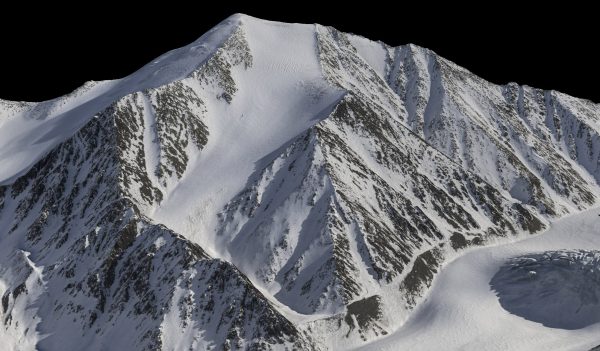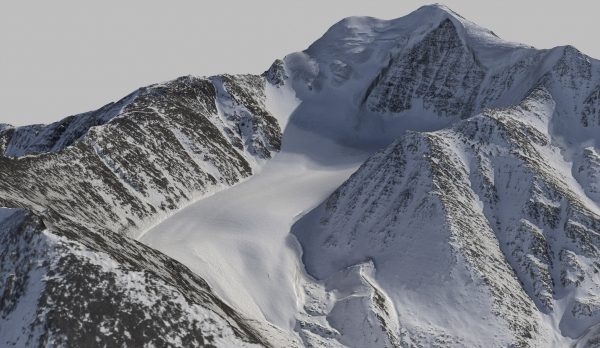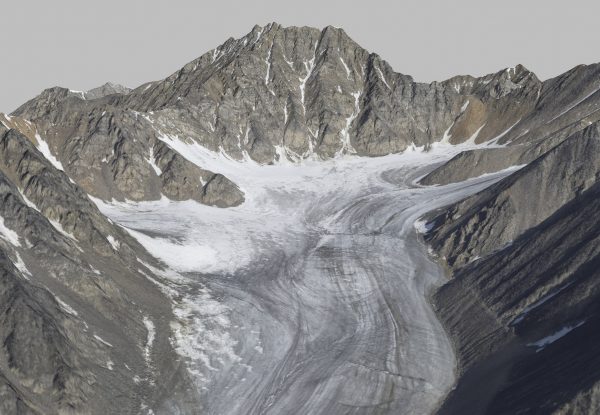New technique settles debate on highest U.S. Arctic peaks
June 23, 2016
Marmian Grimes
907-474-7902

A new, affordable mapping technique developed by a University of Alaska Fairbanks researcher has settled a longstanding debate about which mountain is the tallest in the U.S. Arctic.
UAF glaciologist Matt Nolan and ski mountaineer Kit DesLauriers joined forces to test the technique and settle the decades-long debate. Their research is published in The Cryosphere, an open access journal of the European Geosciences Union.
At 20,310 feet, Denali is the uncontested highest peak in North America, but above the Arctic Circle, a debate remains about which mountain can be crowned the tallest in the United States. Depending on the scale of the map you look at, the 1950s U.S. Geological Survey’s topographic maps of the eastern Alaska Arctic show either Mount Chamberlin or Mount Isto as the highest mountain in the region.
“These mountain peaks just happened to be located in the same area as the glaciers we were studying and several of the peaks ended up in our maps,” said Nolan, a UAF professor and the lead author of the study. He had been mapping glacier volume change in the Brooks Range using a technique called fodar, which he invented. “Because we were interested in understanding the performance limitations of fodar in steep mountain terrain, it seemed a natural fit to combine this validation testing with settling the debate on which peak was the tallest.”

Fodar is used to survey and map terrain using airborne photography. It’s similar to airborne lidar, which relies on laser equipment mounted on an aircraft to scan the landscape and create 3-D maps of the terrain, but is much more affordable.
“The core equipment is a modern, professional DSLR camera, a high-quality lens, a survey-grade GPS unit, and some custom electronics to link the camera to the GPS,” Nolan explained. “A modern airborne lidar unit that can map steep mountain terrain like the one we studied costs over $500,000 and typically requires a twin engine plane and a separate equipment operator. In contrast, the fodar hardware costs under $30,000 if bought new (much cheaper if you buy used) and can be operated by the pilot flying in a small single-engine plane.”
Taking to the skies, Nolan flew his Cessna 170B to map the Brooks Range peaks. Meanwhile, DesLauriers, a professional athlete and the first person to ski down the highest peaks of the seven continents, was on the ground climbing up and then skiing down Mount Isto and Mount Chamberlin. During the trek, she tracked her position using the same type of GPS unit Nolan used in his plane.
“The GPS antenna, mounted to a steel post in my backpack, required a constant unobstructed view of the sky, which forced me find creative ways to adapt my usual ski-carrying system while climbing,” DesLauriers said. “Instead of a normal rest stop to eat and hydrate, I used the rare moments standing still to note my location and time in a field journal so that Matt could have as much data as possible to compare our measurements. The process made climbing the peaks, which took, on average, a 10-hour summit push after a multiday approach, more difficult but also more rewarding.”
Nolan explained why this challenging expedition was needed: “The general idea is to measure elevations from the air at about the same time someone is measuring them on the ground. These ground control points then get compared to the airborne measurements, and the difference between them is a measure of accuracy.”

With an accuracy of better than 20 centimeters (about 8 inches), Nolan and DesLauriers found that Mount Isto is, at 2,735.6 meters (8,975 feet), the tallest peak in the U.S. Arctic, while Mount Chamberlin, at 2,712.3 meters (8,899 feet), is only the third highest peak. Fodar measurements revealed that a third peak, Mount Hubley, surpasses Mount Chamberlin by about 5 meters (16 feet), taking up second place in the list of the highest mountains in the U.S. Arctic. Nolan and DesLauriers believe it is plausible that the ranking has changed over time, and may continue to change as summit glaciers dwindle, though not enough to remove Mount Isto from the top.
Fodar has helped settled this debate, but the applications of the technique extend far beyond measuring mountain heights.
“Though determining peak heights was a fun and useful study, our primary use for fodar is in change detection in the cryosphere (the planet’s frozen regions),” Nolan said. In addition to measuring peak heights, they are using the same maps to study how snow and glacier melt will affect the region.
Nolan has also used fodar to measure coastal erosion, permafrost melt, landslides, ice jams and infrastructure degradation, mostly in Alaska. Elsewhere, he has been discussing fodar projects to study landscape and ecological change in the Galapagos, flooding dynamics in desert regions of Botswana and even earthquake relief in Nepal.
The expedition to climb and map Mount Chamberlin and Mount Isto was sponsored, in part, by a grant from the National Geographic Society and by the National Science Foundation.
ADDITIONAL CONTACTS: Matt Nolan, 907-978-0542, matt2013@drmattnolan.org; Kit DesLauriers, kit@kitdski.com. Bárbara Ferreira, EGU media and communications manager (in Germany), +49-89-2180-6703, media@egu.eu.
ON THE WEB:
The scientific article is available online, free of charge, from the publication date onwards, at http://www.the-cryosphere-discuss.net/tc-2015-214/.
More information about the fodar technique, developed by Matt Nolan, is available at http://fairbanksfodar.com/.


